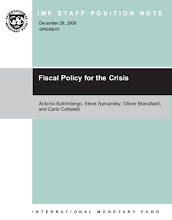Jet Airways hinted that it was in dire need of increasing fares by atleast 15% to remain profitable. Mr. Prock-Schauer went on to demand everything from Aviation Turbine Fuel (ATG) rollbacks, relief on landing and parking charges to deffering User Development Fee (UDF), which is most derided by customers. His wish list almost killed the revenue generation model of aviation sector. But, has the ATF price hike has made business so unviable for domestic airline companies.
ATF constitutes 70% of the operating cost of the domestic airlines but a large portion of it is also recovered by airlines and they also pass on the hike in ATF. So how do they incur loss? Well, airlines would be able to recover it only if they are efficient and their occupancy rates high. Jet Airways is not a good performer on both the counts. It had indulged in shabby merger deal with a shady airline- Sahara air, which made it more inefficient and also added to its cost. In June, Jet Airways was able to fill only 68% of its seats. Though, it was better than Kingfisher’s 64% but was not the best in its class. Two low-cost and a small full service carrier had much better occupancy rate.
Smaller but full service airlines like paramount operated at much higher occupancy rate of 80% despite not being a major player in Delhi-Mumbai route. Also it has remained efficient and profitable by following a strategy largely followed by low-cost airlines for short haul and smaller routes. It purchased smaller and fuel efficient aircrafts, plus it saved on landing and parking charges, which government of India has relaxed for small planes and small town airports. Air Deccan had initially followed the same strategy but they abandoned it for aggressive expansion, for which they are now paying.
Almost all the domestic airlines carved their strategy around growing air traffic but forgot other factors and when faced with competition indulged in consolidation, acquired with same problem. Now, each one wants way out but does not know which way it would be.
ATF constitutes 70% of the operating cost of the domestic airlines but a large portion of it is also recovered by airlines and they also pass on the hike in ATF. So how do they incur loss? Well, airlines would be able to recover it only if they are efficient and their occupancy rates high. Jet Airways is not a good performer on both the counts. It had indulged in shabby merger deal with a shady airline- Sahara air, which made it more inefficient and also added to its cost. In June, Jet Airways was able to fill only 68% of its seats. Though, it was better than Kingfisher’s 64% but was not the best in its class. Two low-cost and a small full service carrier had much better occupancy rate.
Smaller but full service airlines like paramount operated at much higher occupancy rate of 80% despite not being a major player in Delhi-Mumbai route. Also it has remained efficient and profitable by following a strategy largely followed by low-cost airlines for short haul and smaller routes. It purchased smaller and fuel efficient aircrafts, plus it saved on landing and parking charges, which government of India has relaxed for small planes and small town airports. Air Deccan had initially followed the same strategy but they abandoned it for aggressive expansion, for which they are now paying.
Almost all the domestic airlines carved their strategy around growing air traffic but forgot other factors and when faced with competition indulged in consolidation, acquired with same problem. Now, each one wants way out but does not know which way it would be.




No comments:
Post a Comment